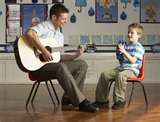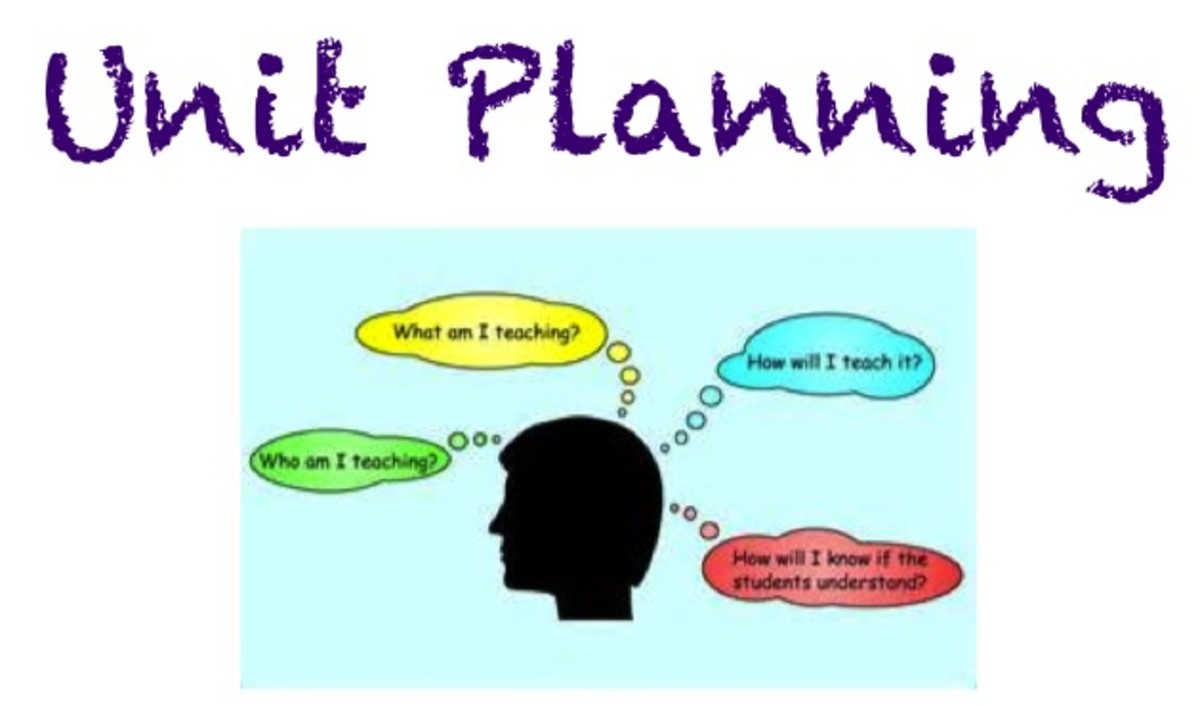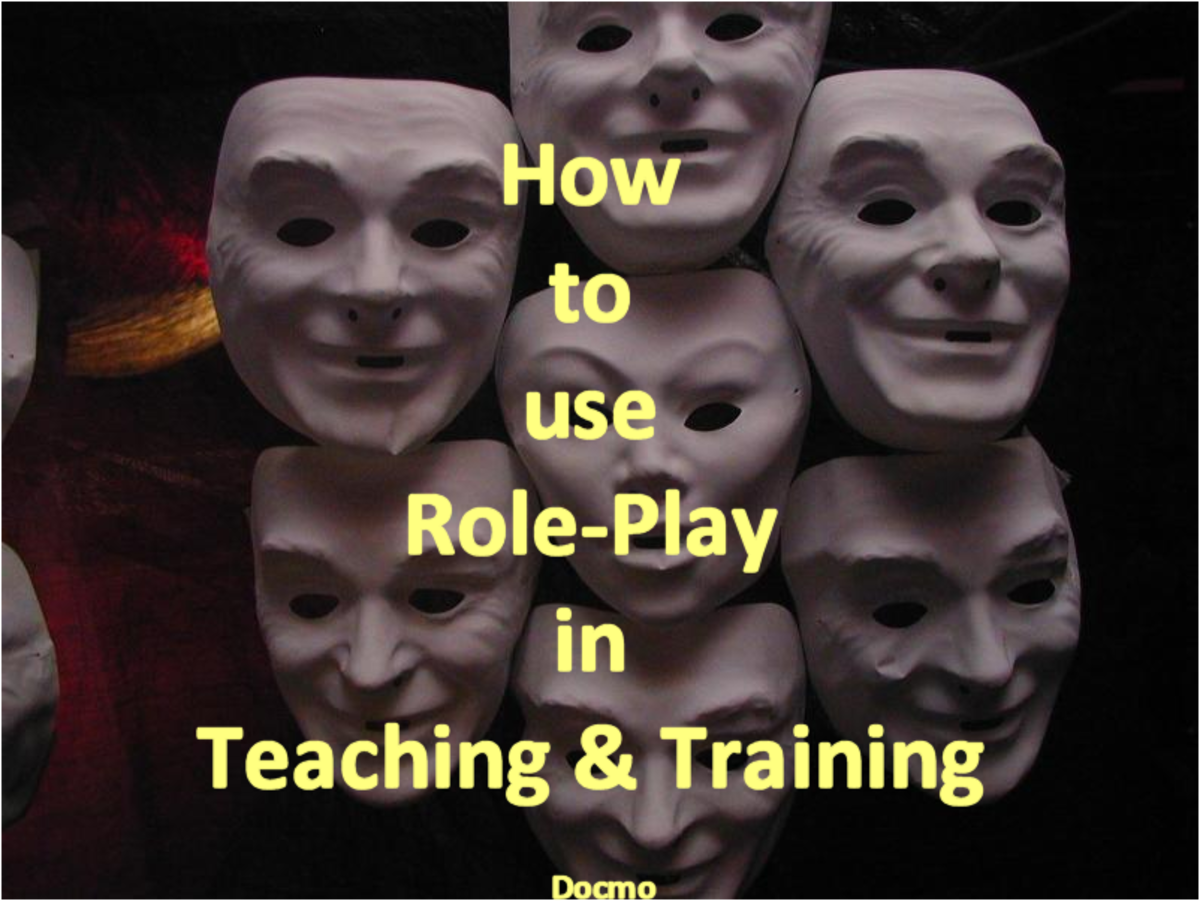Teacher Communication

Any parent will tell you that the teacher can make or break a year for a student. We can all think back and easily recall that one great teacher that made it "one of the best years I've ever had" and unfortunately you may have that teacher that made coming to school a struggle. A lot of pressure is put on teachers for the academic success of their charges. As a teacher I quickly learned that I could only be responsible what I had control over, my attitude, my relationships with students and their families, how I made the classroom I was given more conductive to student learning, and what continued activities I did to improve my skills.
Teacher communication is vital for a successful classroom. What you verbally say usually is only half as important as what you communicate by example. Communication has many parts, being aware of each component, and recognizing how to use each feature of communication most effectively to enhance student learning is the difference between someone who can teach and someone who can let others learn.
Brain Based Learning; The New Paradigm of Teaching


A Teacher Influence on a Classroom
We discussed the role sight had in learning, recognizing the importance of having positive messages up for students to see, proper lighting, and utilizing classroom aides like whiteboards to help student be more efficient in their learning. Your attitude is also an important component to the classroom.
While observing Macaque Monkeys two Italian researchers, Iaccomo Rizzolati and Vittorio Gallasse noticed that neurons in the ventral pre-motor area of the brain fired when complex actions such as reaching for a treat, pulling a handle or pushing a small door, however a small subset of neurons fired when the monkey watched another monkey to the same action as long as the action was of interest to the monkey (Iacoboni, Molnar-Szakacs, Gallese, Buccino & Mazziotta, 2005).
While we all have these neurons that basically let us see the world from another's point of view, there is evidence that these are significantly impaired in individuals on the Autism Spectrum (Iacoboni & Dapretto, 2006)
This system explains why watching someone yawn makes you yawn, mob mentalities, copy cat crimes and how imitation learning occur. There is evidence to show that while this system is always in place, as we get older most people develop abilities to decrease the urge to simply copy all behavior, instead analyzing what they see and deciding if it is in good judgement or not to copy it. Young children, teens and even adults with frontal lobe brain damage may not have this ability. It also explains why when you are in a good mood your students seem to perform better, they are following your lead.
The role that teacher expectations play in regards to student achievement is not as clear. There are studies that show when teachers are told a group of students show "promise" and that significant progress could be "expected" those students perform well (Rosenthal, 1991).
I think back to a math teacher I had in high school. He wanted to increase his enrollment in Algebra and higher level math classes. He started with his 9th graders simply saying "next year when you take ... you will need to know". He did this with each of his classes, explaining how what they were learning would directly fit into the next class he expected them to take. Within a year he had to add additional sections of math.
The Role of Sight in Learning
- The Role of Sight in Learning
We forget sometimes that what and how are students see is just as important as the curriculum we deliver. Come learn how sight impacts the learning process.
Teacher Authority and Credibility
Teachers are authority figures. Unlike other authority figures though we don't have a uniform that demands respect, instead we need to depend on our actions and words to help gain the respect of our students. According to Jensen (2008) there are some specific things we can do to increase our credibility with our students:
- Model respect. Respect your learners, and they will be more respectful of you.
- Share your experience: How long have you been in the profession? How did you develop your specialty knowledge or area of expertise? What are some personal experiences that have been instrumental in your growth?
- Talk about your mentors and role models.
- Volunteer to work on district, state, or national projects or committees.
- Become known as your organization's spokesperson on a particular subject--preferably your area of expertise.
- Attend continuing education courses, conferences, and workshops. Present at them if possible.
- Keep your promises and commitments.
- Use positive language--never vulgarity or profanity. Interrupt all racist or sexist remarks made by anyone in your presence.
- Contribute articles to periodicals, anthologies, or scholarly journals for publication consideration.

Teacher Congruency
Make sure what you say is matching up with how you say it. While the brain can only consciously process one sensory message at a time, it is on overdrive subconsciously sorting out all the sensory background noise. If you tell your student's you are excited to start a unit, but your body language says the opposite, they will pick up on it.
Take steps to ensure what you are saying is being conveyed correctly by your body language. Videotape yourself, ask a co-worker or mentor to observe you, or better yet, allow your students to critique you.


Teacher Appearance
Clothing consultant John Malloy (1988) conducted an experiment to determine what affect, if any, teacher dress had on student learning. His research showed that better-dressed teachers experienced fewer behavior issues and better work habits from their students.
We all know the old adage, don't judge a book by its cover, but lets face it we all do. Why would we expect anything else from our students. While it shouldn't make a difference what someone is wearing, any edge ahead we can get on our credibility should be taken.


Tight Teacher Control
Think back to your first couple years of school. It was fun, it was exciting, it was exploring. You were allowed to go and build with blocks, explore the water/sand table, create art projects you would later explain to others. As Kindergarteners most students probably had more control over their learning than they do as Seniors.
Glasser (1999) notes that they more learners feel controlled, the more resentful they get. Resentment, whether expressed (and manifested as frustration, rebellion, and anger), or suppressed (and manifested as detachment, sabotage, and apathy), detracts from learning.
A great teacher knows how to help students make good decisions and choices, knows how to let students feel like they have control and a say in their education and ultimately shares the task of achieving their academic potential with them.
Learner Expectation
Nobody wants to feel like their time is being wasted, and our students are no different. Most would not chose to be in our classroom instead of out fishing, snowboarding, swimming or even working. They are there because it is required. It is our job as teachers to encourage them to get the most out of school and your classroom.
Whenever possible try to show students how what they are learning today will directly benefit and/or influence their futures. Encourage further exploration when they find something of interest to them and assist them in finding ways to complete projects/assignments in a manner they can be successful and still show competency.
Altering Learner Behavior
Jensen (2008) reports there are seven universally accepted ways to alter learner behavior. Some are generally more effective than others, but all will be discussed:
Generally More Effective Communication Methods
- Suggest--provide a suggestion that includes the option you prefer the student select, "You might like to use colored pens for taking notes". This provides the student a great deal of perceived choice.
- Ask--Make a request stating the action you would like to see done, "Would you please use your colored pens to take notes". This still provides students some sense of choice.
- Tell--Tell students what you would like done, "Use your colored pens to take notes". This provides the least amount of choice for students.
Generally Less Effective Communication Methods
- Hope--This is a non-verbalized request that teachers assume students will just do. There is an old saying as to what happens when you assume, lets just say it doesn't turn out well for you or the other person :) Student don't know your request, so they have no choice in complying.
- Imply--"beating around the bush" is never a very effective way to get what you want out of life, and no more effective in the classroom.
- Demand/Threaten--very few people respond well to demands or threats, most will shut down or go into a protective mode. Unless used in events when extreme danger is present, it's effective in student learning.
- Force--force is never a good option unless someones life is in danger.

Forced Silence and Class Inactivity
We've all been there, in the meeting, listening to the leader talk on and on and on, with no end in sight, your eyes barely able to stay open. Think back to what you retained from that meeting, chances are very little.
While we've all been there, most of us if we are honest with ourselves will also admit to being that leader in our classroom. Requiring students to sit quietly, in their desks, with little to no movement as we deliver our lesson.
Valle (1990) claims that 50% of adolescents need extensive mobility while learning. Of the remaining 50%, half (25% of total) require occasional mobility. With this information, we need to start wondering if a sleeping student is more a statement about them, or us as a teacher.
The Climate Can be Highly Active
Many of our life lessons where learned outside of a desk, they were learned by doing. James Asher (1966), inventor of Total Physical Response (TPR) states that learning on an immediate, physical and gut level speeds acquisition dramatically. He encourages teaching the body; maintaining it learns as well as the mind, and in some cases remembers better.
To use the TPR approach successfully, the following conditions are recommended:
- The teacher creates strong rapport and a relationship with students
- The learning climate is cooperative, playful, active and fun
- The teacher establishes an environment of mutual respect
- The teacher gives imperative instructions to students in a commanding but gentle manner
- The students respond rapidly without analyzing the input.
As baby's we learned many lessons this way. Think of ways you can encourage students to get up and move, act out, create the lessons you are trying to teach. Not only will they view learning as fun, but they will probably remember what you are trying to teach longer.
As teachers we need to recognize that what we say is only a small portion of our communication with our students. Being aware of how we say things, and making sure our actions coincide with our words is a must in order to help our students achieve academic success.




